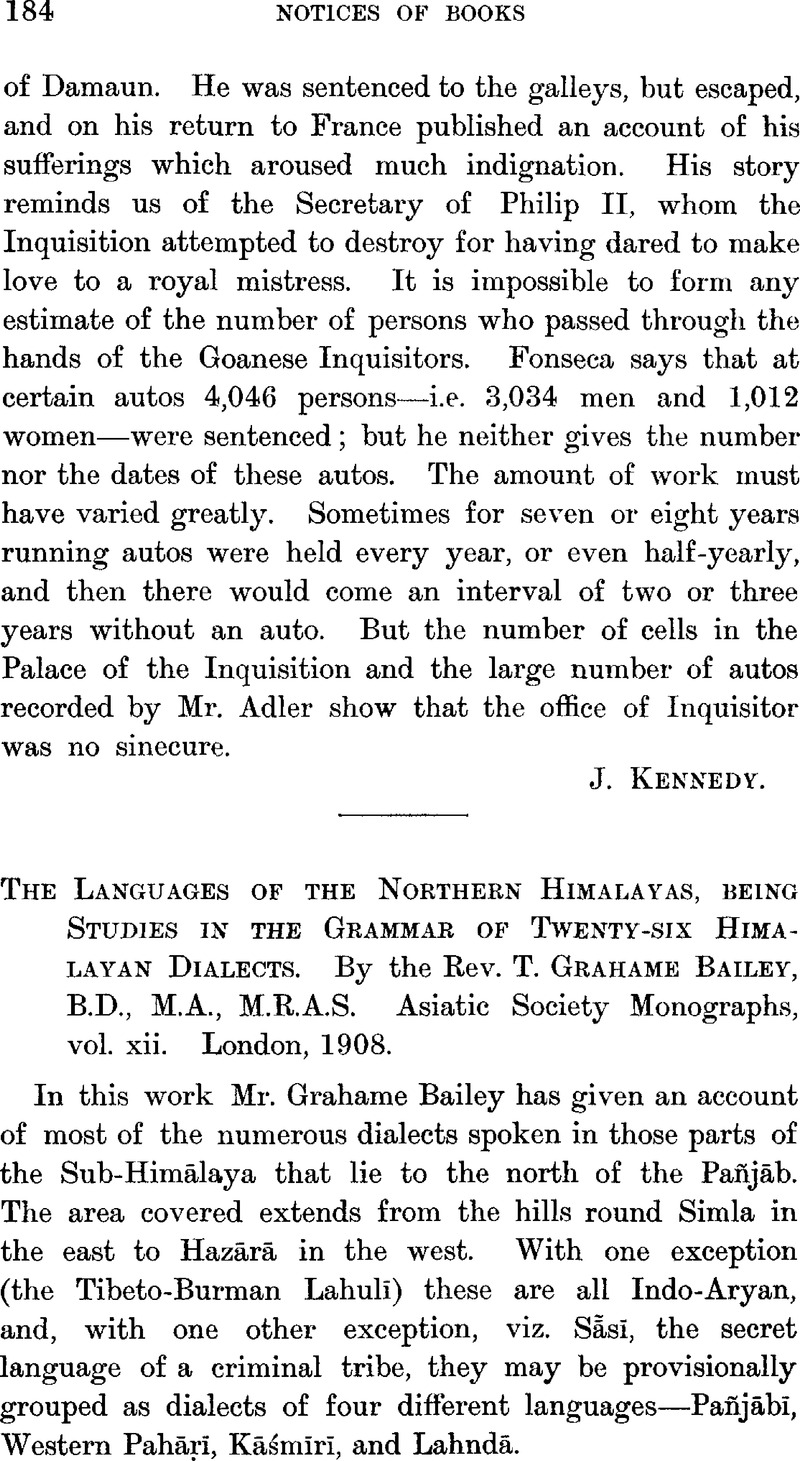No CrossRef data available.
Published online by Cambridge University Press: 15 March 2011

page 185 note 1 It is a question whether we should not rather say that the people of Rājputānā speak a form of Gujurī, rather than that the Gujurs speak a form of Rājasthānī, but that is a question too large for discussion here.
page 186 note 1 To be strictly accurate, we should except Mr. O'Brien's short sketches of ![]() and Gādī, which have been edited by Mr. Bailey, but these, though excellent, form only a small portion of the whole.
and Gādī, which have been edited by Mr. Bailey, but these, though excellent, form only a small portion of the whole.
page 186 note 2 By far the fullest and best account of the Khaśas is that contained in chapter iv of vol. ii of Atkinson's, E. T.Gazetteer of the Himalayan Districts of the North-Western Provinces of India (Allahabad, 1884),Google Scholar an admirable work too little known to European students.
page 187 note 1 I have noted its existence in Gaṛhwālī and Kumaunī.
page 188 note 1 Mr. Bailey calls this an oblique genitive, but it is clearly a dative.
page 188 note 2 It is hardly necessary to repeat that nearly all Indo-Aryan dative terminations are really locatives of the corresponding genitive terminations, just as the Sanskrit kṛtē is the locative of kṛtas.
page 188 note 3 Bashgalī Kāfir, one of the Piśāca languages, forms its future with the same suffix.
page 189 note 1 I cannot satisfy myself that the usually accepted derivation of this -gā from the Sanskrit -gatas is correct.